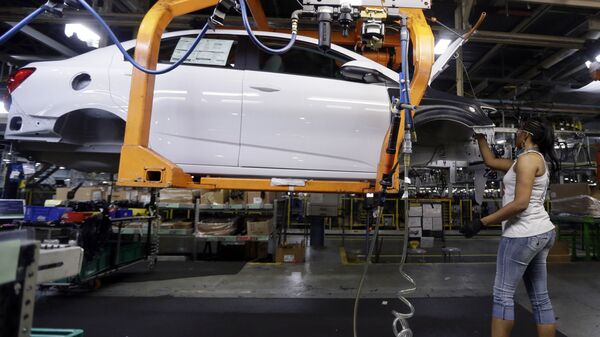The COVID-19 pandemic has dealt a substantive blow to the US economy with inflation-adjusted gross domestic product (real GDP) expected to shrink by about 12 percent during the second quarter, which is "equivalent to a decline at an annual rate of 40 percent", according to Congressional Budget Office (CBO) preliminary projections. The CBO envisions that the unemployment rate will be about 14 percent in the coming months, while the federal budget deficit is due to reach $3.7 trillion in fiscal 2020.
Worsening living conditions and worrisome economic prognoses have set alarm bells ringing for American states and prompted sporadic anti-lockdown protests in Washington, Michigan, Texas, Maryland, and California last weekend. The White House has unveiled a plan for gradual easing of quarantine measures for state governors, however, some still resist lifting lockdown as the number of COVID-19 cases in the US rose above 930,000.
Why GDP Measure is 'Deeply Flawed'
Though it is definitely time to gradually open-up, one should not overestimate the grim GDP indicators, argues Wall Street analyst and investor Charles Ortel: "GDP is a deeply flawed measure nevertheless used worldwide to estimate annual economic output of a nation", he says. "GDP does not directly address changes in the stock of wealth inside a nation – in the US, wealth is many times GDP".
"The biggest portion of GDP is consumption, what we spend to live each year", the Wall Street analyst elaborates. "For a substantial majority annual incomes merely cover living costs, and leave no money left over for savings. Investments in GDP are counted at their cost, whether add or destroy value in a nation. Unlike the US, where consumption is much larger than investment, in China the theoretical value of investment is much higher than consumption, and likely is overstated".
The matter of real concern were "disastrous trade deals and decisions" which "locked America into trade deficits that appeared to be structural… until Donald Trump rolled up his sleeves", according to the analyst.
"The present crisis exposes, clearly, dangers of past practices", he stresses. "For several quarters, reported GDP and company numbers will appear grim. But these losses likely will be more than offset as multinationals compress supply chains and as American firms radically reverse the now dreaded effects of offshoring in vital industries including drugs, manufacturing, and data".
On the other hand, there are certain measures to cope with the unemployment rates and growing government spending, according to the Wall Street analyst:
· first, to encourage hiring in the private sector while shrinking the vast array of public sector and quasi-public sector workers;
· second, to assess social security taxes on all employment incomes – not on dividends and interest – but at a much lower percentage rate. For example, workers who earn more than a low six-figure amount do not pay social security taxes on their excess earnings, nor do the employers of these workers;
· third, the task of reigning in government spending on workers, on their expensive pensions, and on contracts entered into by governments.
When Will US Economy Recover?
In mid-April, more than 50 economists polled by Reuters outlined five possible scenarios for the post-COVID economic recovery which ranged from the most optimistic V-shaped scenario to the gloomy L-shaped one.
"Economic and financial results coming out will be gloomy through August 2020, as these reflect performance from April through June 2020 when we will be either shut down, or just starting to recover", says Charles Ortel. "Absent a second (or more) jolts to the global economy, including recurrence of COVID-19 or geopolitical attack, I think the soonest the US economy may roar back is in September 2020, as it will be difficult to get fully back to work during the summer months".
Obviously, there is, as usual, no consensus between economists in respect to the shape and speed of the recovery, notes Fabien Chalandon, a private investor, banker and writer.
"The fastest recovery will be achieved by focusing all the financial and medical means on the small businesses who are the economic actors which have suffered the most in the early stage of the pandemic, with some limited number of large companies being dealt with separately with ad hoc surviving kits for the likes of airlines and airplane manufacturers. This favour the 'V' shape", he observes.
However, the US economy "will not have reached its bottom, nor will it rebound quickly, if President Trump follows the medical advice of his health advisers too long", the investor opines.
"To ensure the economy avoids a dreadful 'L' shape, he will need to arbitrate the US course of action towards a riskier route of opening up the economy with a focus on small businesses", Chalandon stresses.
Still, the two financial experts are unanimous in suggesting that the US economy is now more flexible than most and that it should recover faster than most, since American business owners and workers are highly motivated.
A number of American states have begun to reopen in a bid to revive the economy, regardless of spike in confirmed coronavirus cases across the country. The first businesses have started working again in Georgia, Oklahoma, South Carolina, and Alaska while 15 states are scheduled to lift stay-at-home orders by the end of April or in early May, according to The New York Times.




